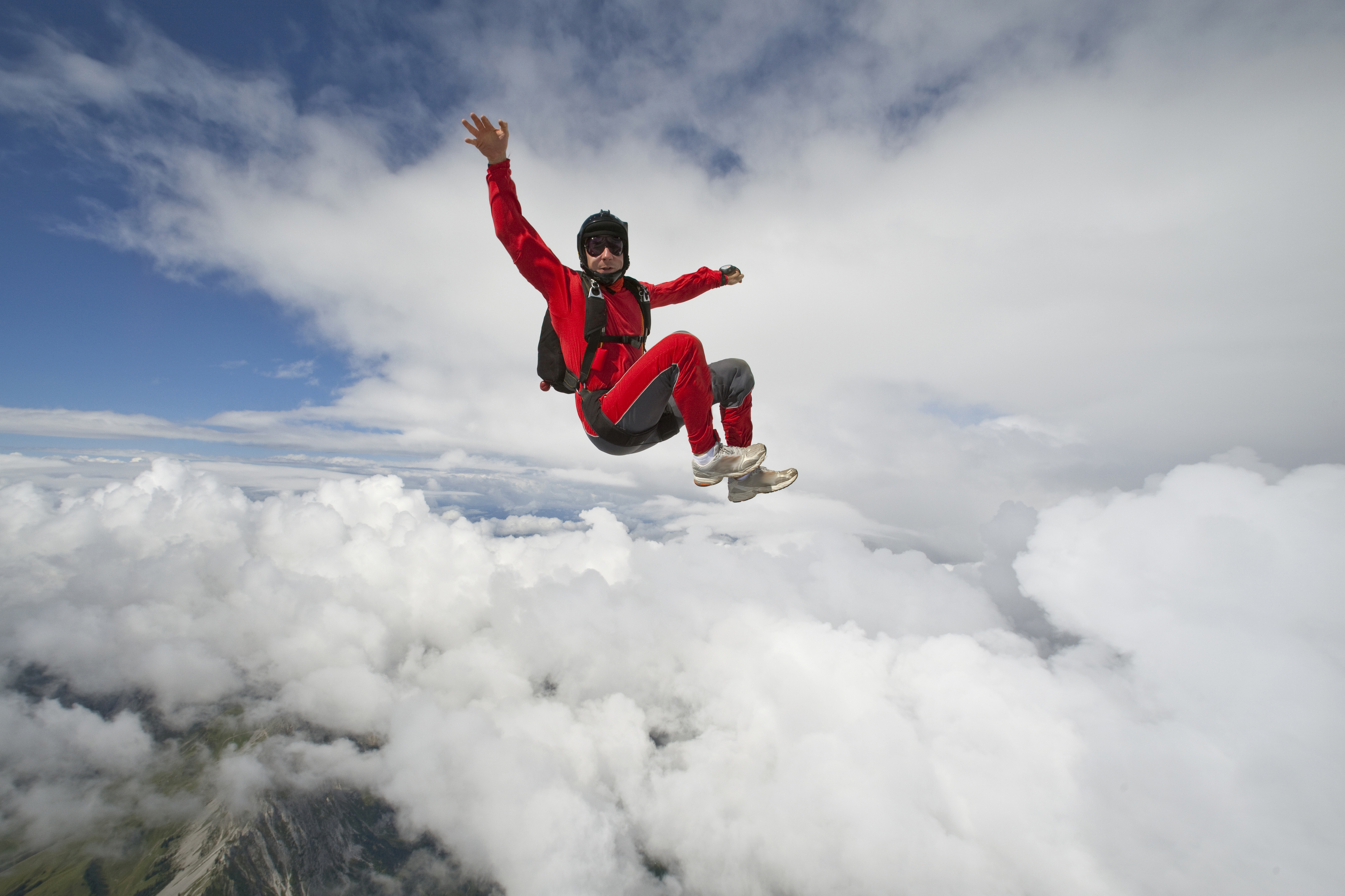For thrill-seekers and adrenaline junkies, both base jumping and skydiving offer a unique opportunity to experience the exhilaration of freefalling through the sky. While they may appear similar at first glance, base jumping and skydiving are distinct activities with their own sets of characteristics and risks. In this blog post, we will delve into the differences between base jumping and skydiving, exploring their equipment, locations, techniques, and legal considerations.
Base Jumping
The Essence of Thrill Base jumping is an extreme sport that involves leaping from fixed objects, such as buildings, bridges, and cliffs. The term “BASE” is an acronym for Building, Antenna, Span (bridge), and Earth (cliff). Base jumpers typically wear a specially designed wingsuit, a parachute, and sometimes additional safety equipment such as helmets and altimeters.
Base jumping offers an unparalleled rush due to its low-altitude jumps, rapid descent, and proximity to the ground or other structures. This activity demands precise planning, exceptional skill, and a deep understanding of the environment. Base jumping is known for its intense adrenaline rush and the incredible visual experience it provides.
Skydiving
Skydiving, on the other hand, involves jumping from an aircraft at a higher altitude, typically ranging from 10,000 to 15,000 feet. Skydivers wear a jumpsuit, a parachute, and other safety equipment. The jump is usually performed in tandem with an instructor or solo with the use of an automatic activation device (AAD) that automatically deploys the parachute if necessary.
Unlike base jumping, skydiving offers a longer freefall time, allowing jumpers to enjoy the exhilarating sensation of being suspended in the air. It provides a sense of freedom as you glide through the sky, taking in breathtaking panoramic views. Skydiving is a popular activity for both beginners and experienced thrill-seekers, and it often serves as a stepping stone for those considering more extreme adventures like base jumping.
Equipment and Safety Measures
When it comes to equipment, both base jumping and skydiving require specialized gear designed to ensure safety during the descent. However, there are some notable differences in the equipment used for each activity.
In base jumping, the equipment is specifically tailored for low-altitude jumps and maneuverability. Base jumpers rely on wingsuits, which are aerodynamically designed garments that allow them to glide through the air. Additionally, base jumpers use parachutes with smaller canopies, as they require quick deployment and rapid descent to ensure a safe landing within a limited space.
On the other hand, skydivers utilize parachutes with larger canopies designed for slower descent rates. These parachutes offer more control and stability during the longer freefall time. Skydiving equipment also includes a reserve parachute as a backup and an AAD for automatic deployment if the main parachute fails to deploy at a certain altitude.
Locations and Accessibility
Base jumping and skydiving differ in terms of accessibility and the locations where these activities are typically performed.Base jumping locations are more restricted and require specific geographical features, such as tall buildings, cliffs, or bridges. Due to safety and legal considerations, base jumping is generally prohibited in most urban areas and national parks. Base jumpers often seek out remote locations with suitable structures that provide a thrilling and challenging experience.
Skydiving, on the other hand, can be enjoyed in various designated drop zones around the world. These drop zones are specifically designed for skydiving activities, providing safe and controlled environments for jumps. Skydivers have the opportunity to explore different drop zones and experience diverse landscapes, from coastal regions to mountainous areas.
Legal Considerations and Risk Factors
Both base jumping and skydiving come with inherent risks and legal considerations. Due to the extreme nature of these activities, participants face potential hazards that must be carefully managed.
Base jumping is widely recognized as a high-risk sport, and legal regulations surrounding it are stringent in many jurisdictions. Base jumpers often face legal restrictions, requiring permits and specific training certifications to engage in the activity. The risks associated with base jumping include the potential for impact with structures, parachute malfunctions, and environmental factors such as wind or weather conditions.
Skydiving, although relatively safer than base jumping, also carries risks. However, skydiving is more regulated and standardized compared to base jumping. Drop zones adhere to strict safety protocols, and instructors undergo extensive training. Skydivers must follow established guidelines to mitigate risks, including regular equipment inspections and adherence to weather and safety regulations.
Thrills Above and Beyond | Conclusion
In conclusion, base jumping and skydiving offer distinct experiences for thrill-seekers, each with its own unique characteristics and risks. Base jumping is an extreme sport that involves low-altitude jumps from fixed objects, providing an intense rush and visually stunning encounters. Skydiving, on the other hand, entails higher altitude jumps from aircraft, allowing for longer freefall times and a sense of freedom in the skies.
While both activities require specialized equipment and safety measures, base jumping is more restricted in terms of locations and legal considerations. Skydiving, with its designated drop zones and standardized practices, offers a more accessible and regulated experience.
Ultimately, whether you choose base jumping or skydiving, it’s essential to prioritize safety, adhere to legal regulations, and receive proper training from certified professionals. Embrace the adventure and experience the unparalleled thrills that these activities have to offer, all while respecting the risks and taking necessary precautions. Contact us today to learn more!
Ready to Soar with Us?

